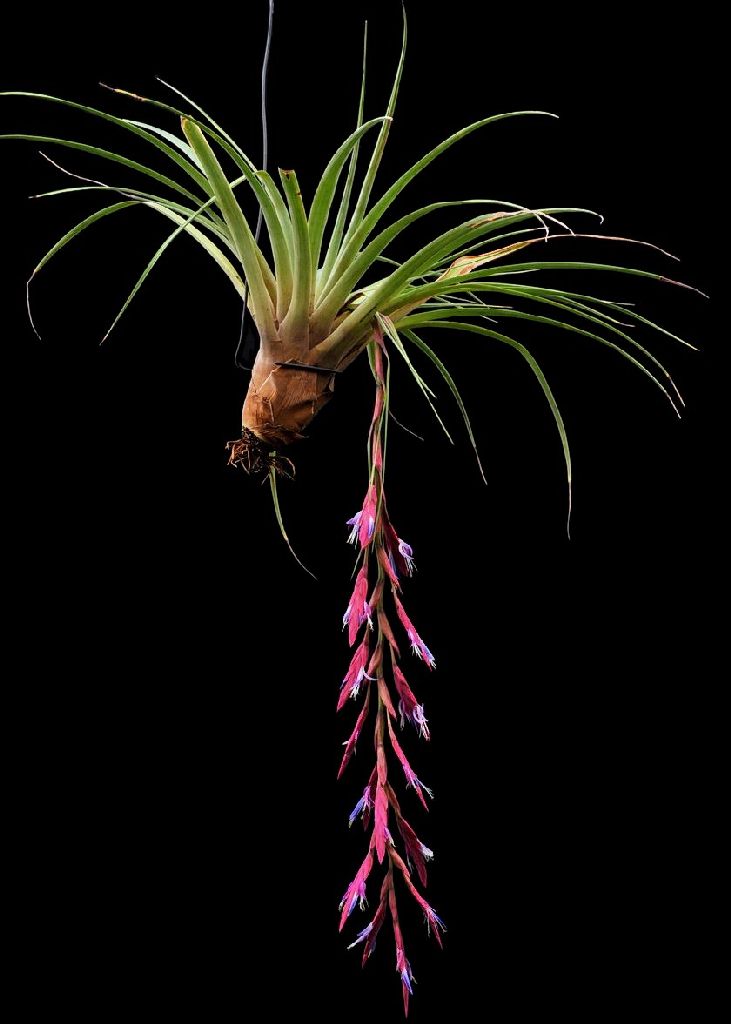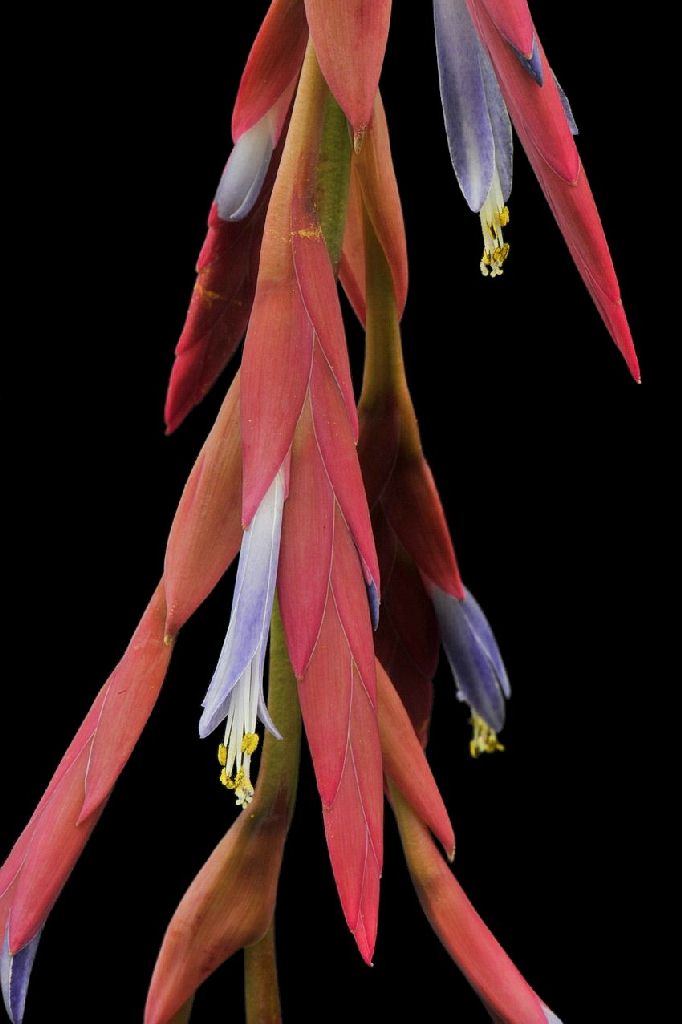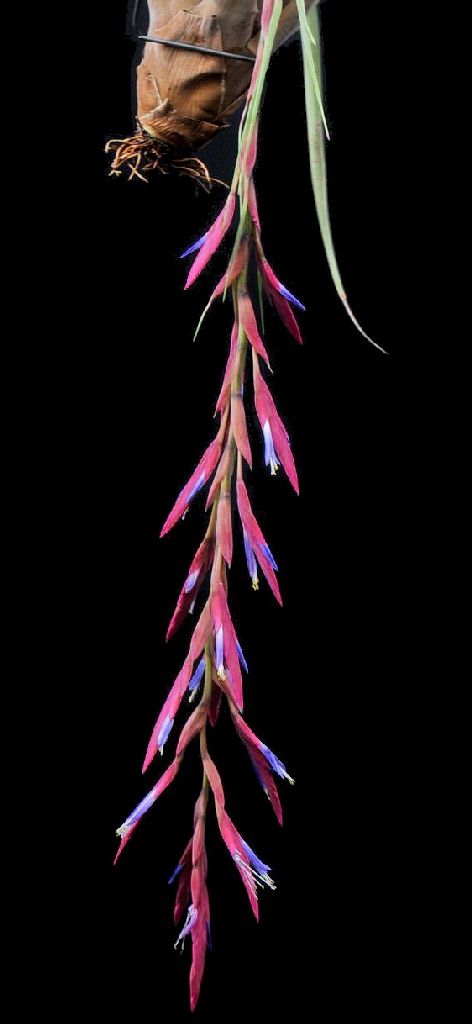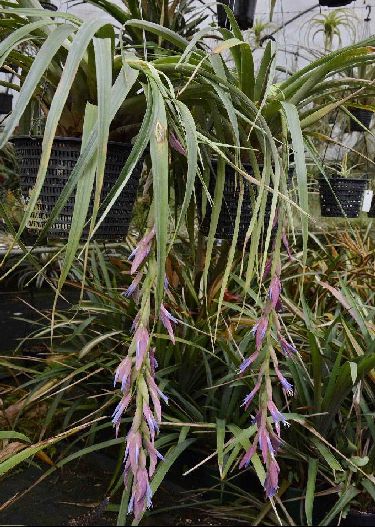



A Vriesea pereziana (Andre) L.B. Smith cui affinis sed bracteis florigeris quasiglabra, petalis violaceus differt.
Plant an epiphyte, 60-80 cm in diameter, 80–100 cm long with the inflorescence extended.
Leaves laxly spreading in a dense rosette, 50 to 80 in number:
Leaf sheaths ovate to broadly elliptic, 8-10 x 6-9 cm, castaneous especially adaxially, densely brown punctate-lepidote especially adaxially;
Leaf blades narrow triangular, attenuate, 25-40 x 2-3 cm, moderately coriaceous, densely punctate-lepidote especially abaxially, grey to grey-green.
Scape 12-20 cm x 3-6 mm, semi-erect to arcuate, glabrous, dull green tinged reddish;
scape bracts broadly elliptic with a long, narrowly triangular blade, laxly imbricate, exposing much of the scape, densely lepidote, grey-green to pink.
Inflorescence pendulous, 40-70 x 10-15 cm with 12 to 30 branches;
Primary bracts like the upper scape bracts but without the long blade, mostly apiculate, mostly shorter than the peduncles, grey-green to pink;
branches spreading at ca 30° from the axis with an ebracteate 3-7 cm x 2-4 mm flattened peduncle that exceeds nearly all of the primary bracts; the fertile portion 4-8 x 1- 2cm, 4 to 10 flowered;
Floral bracts elliptic, acute, 20-26 x 8-10 mm nerved, variably carinate, tightly imbricate in life, spreading when dried, glabrous except for a few pale fimbriate trichomes at the very apex, bright magenta pink, somewhat glaucous.
Flowers distichously arranged, 2-4 mm pedicellate, opening during the day;
sepals narrowly elliptic, acute, free, 17-19 mm long, carinate, nerved, glabrous, pale green;
corolla semi-tubular, spreading at the apex, blue-violet to blue, paler proximally; petals ligulate, acute, 38-42 mm long with a pair of basal appendages;
stamens & style exserted.
Paratypes: Peru. Ex hort J. Kent, from seed, 7 August 2007, D. Cathcart s.n. (SEL);
Amazonas, Leimbamba-Chanchapoyas roadside, 1800m. 1999, J. Kent legit; flowered in cultivation SEL 2008-163 10 March 2008; H.E. Luther s.n. (SEL).
This species can be distinguished from Vriesea pereziana and its variety canescens (Andre) Gilmartin in having a much larger and more richly branched inflorescences, nearly glabrous floral bracts and blue to blue-violet (not green) petals. I suspect that the only Peruvian collection of V. pereziana var. canescens (Sagastegui 6001) at the University of Trujillo is actually a depauperate example of V. kentii; unfortunately I have not been able to examine this specimen beyond a poor photocopy. Otherwise, all collections of V. pereziana are from southern Colombia, and all collections of V. kentii are from northern Peru. This spectacular ornamental is named for its collector, Mr. Jeffrey Kent, La Vista, California, who grew a population of plants from field collected seed.